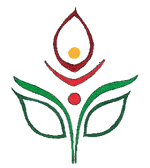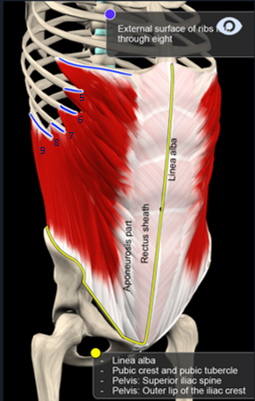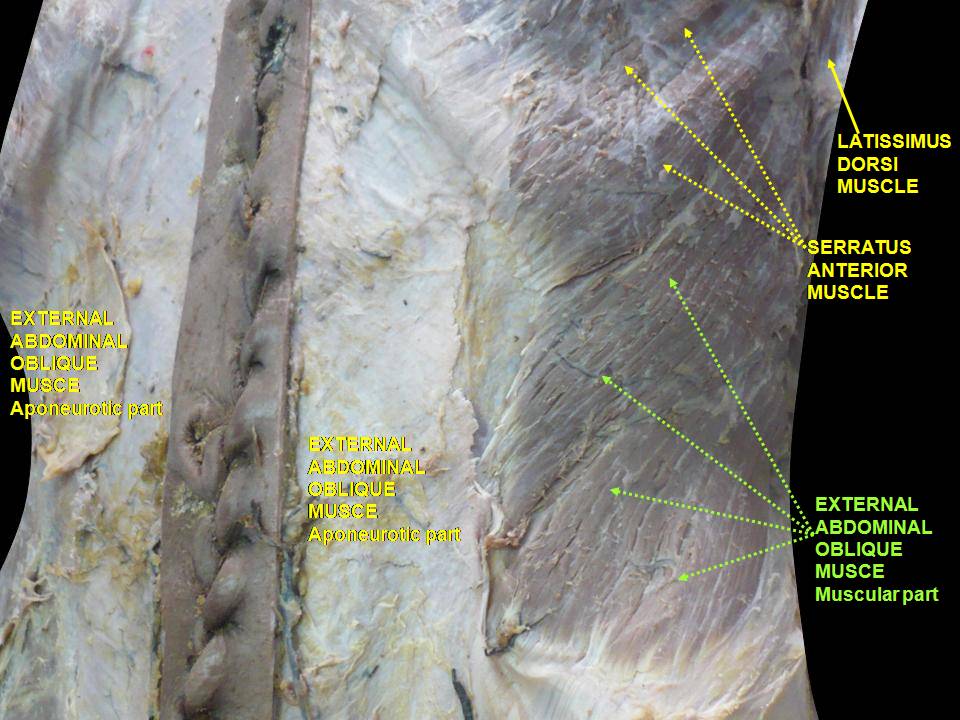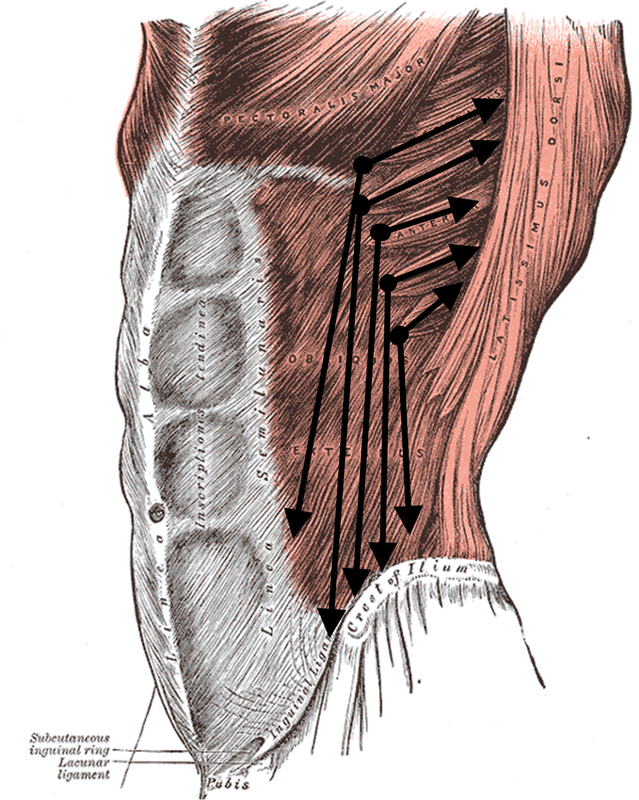|
You who have been practicing with me since the resumption of class know that I have been super focused on these two muscles as a fulcrum for every movement and breath during practice (and hopefully as you go through your daily activities. Whether it is back pain, shoulder issues, knee damage even balance and ultimately breathing that we are working with, the synergy of these two muscles in motion has an effect. The Obliques, internal and external, when you were a fetus, grew from your 5th through 8th rib and attached to the ridge of your pelvis. If you pull the two ends toward each other, they bring your ribs and your pelvis closer together. If you gently snuggle them into isometric contraction, they stabilize the front of your upper torso so that the pelvis and the ribs do not get loose from each other. On the other hand, if they are “locked”, meaning they don’t have not expanded or contracted and are in myofascial non-squishiness (you like that term?), like a dried out sponge, not only will they not stabilize the torso, the upper torso and the lower torso will have no freedom of independent movement from each other. We want (we should want) both and even better, stability and freedom, each on demand when the situation calls for each. The Serratus Anterior grew from the 1st through 8th (sometimes 9th) ribs and headed up, at a diagonal under the armpit to fasten to the underside of the shoulder blades- the side between the shoulder blades and the rib cage. They have a lot of tasks. To keep you with me here, let’s focus on how they should work to keep the shoulder blades from “winging” or popping off the back. They also are crucial in lifting the arms without wear and tear of the infamous rotator cuff muscles and the biceps and triceps. What I really want to get at is how the obliques and the serratus are really one continuum of force- they DO NOT work separately from each other. Even looking at the human anatomy, it’s pretty impossible to show how they could separate. Looking at the Gray’s Anatomy drawing, imagine how in your own body, you can pull the shoulder blade (hidden underneath the Latissimus dorsi) down and forward toward the frontal rib anchors with the assistance of engagement by the obliques at the Crest of the Ilium- AKA your pelvic crest- remember I mentioned above, “If you gently snuggle them into isometric contraction, they stabilize the front of your upper torso so that the pelvis and the ribs do not get loose from each other.” This is going to help you then snuggle the shoulder blade into position as you lift your arm. If you took the time to watch the YouTube video, scapular force coupling, that does a good animation of what we want so that we experience less pain, greater mobility and even more strength. This all gets a little nerdy/geeky (use your preferred term), I know, but almost all of us at Aspiration Community Yoga are struggling with strength and mobility issues that stem from this muscle being under activated, so much so that for some of us it’s going to take a lot of coaxing, time and patience to get the neurons to fire the synapses and for the serratus anterior to fully lengthen and shorten again. You can do it!! The body never, no matter the age of the tissues, looses the ability to re-fire and re-wire!
Comments are closed.
|
Archives
December 2022
|




 RSS Feed
RSS Feed